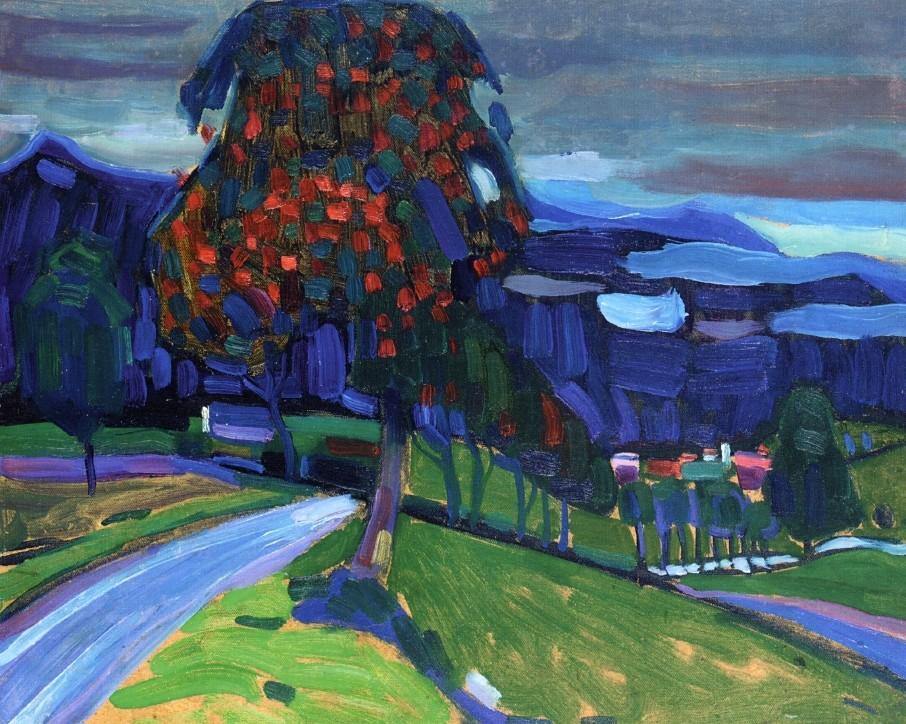Description
Wassily Kandinsky's "Autumn at Murnau" painting is a masterpiece of abstract expressionism that has captivated art lovers since its creation in 1908. This work is a perfect example of Kandinsky's artistic style, characterized by the use of geometric shapes and bright colors to create a sense of movement and excitement.
The composition of the painting is fascinating, as Kandinsky uses abstract forms to represent nature. Trees, sky and water are represented by geometric shapes, which creates a sense of movement and dynamism in the work. Additionally, the painting is divided into three sections, each with its own color scheme, creating a sense of depth and perspective.
The use of color in "Autumn in Murnau" is impressive. Kandinsky uses a palette of warm and vibrant colors, such as red, orange and yellow, to represent autumn. These colors are combined with cooler tones, such as blue and green, to create a sense of balance and harmony in the work.
The story behind the painting is equally interesting. Kandinsky created this work while living in Murnau, a small town in Bavaria, Germany. The painting was inspired by the natural landscapes of the region, and Kandinsky used his unique artistic style to depict the beauty and emotion of nature.
Plus, there are little-known aspects of the painting that make it even more fascinating. For example, it is believed that Kandinsky used music as an inspiration to create this work. He believed that music and art were closely related, and that music could be used to create a sense of movement and emotion in painting.

